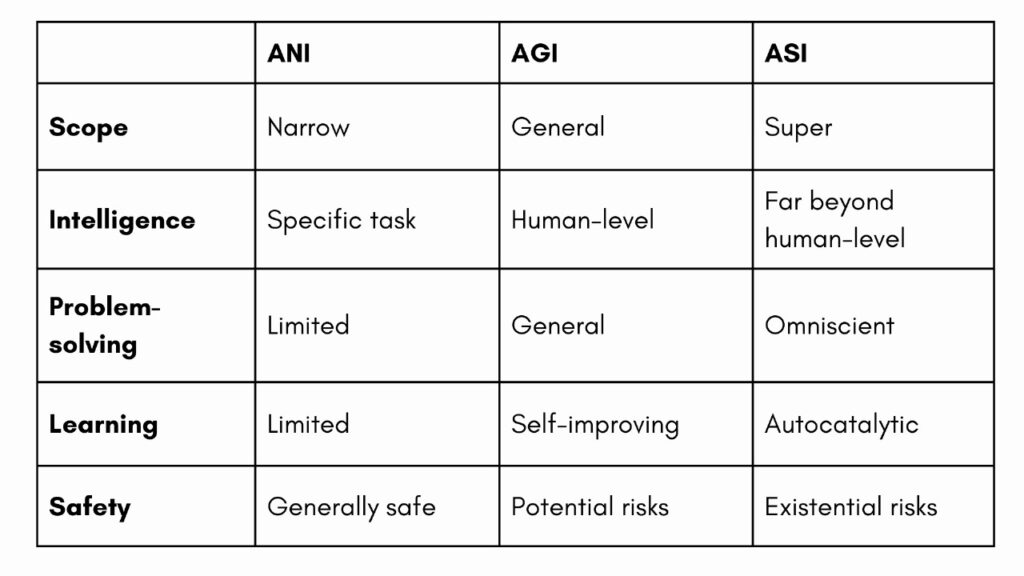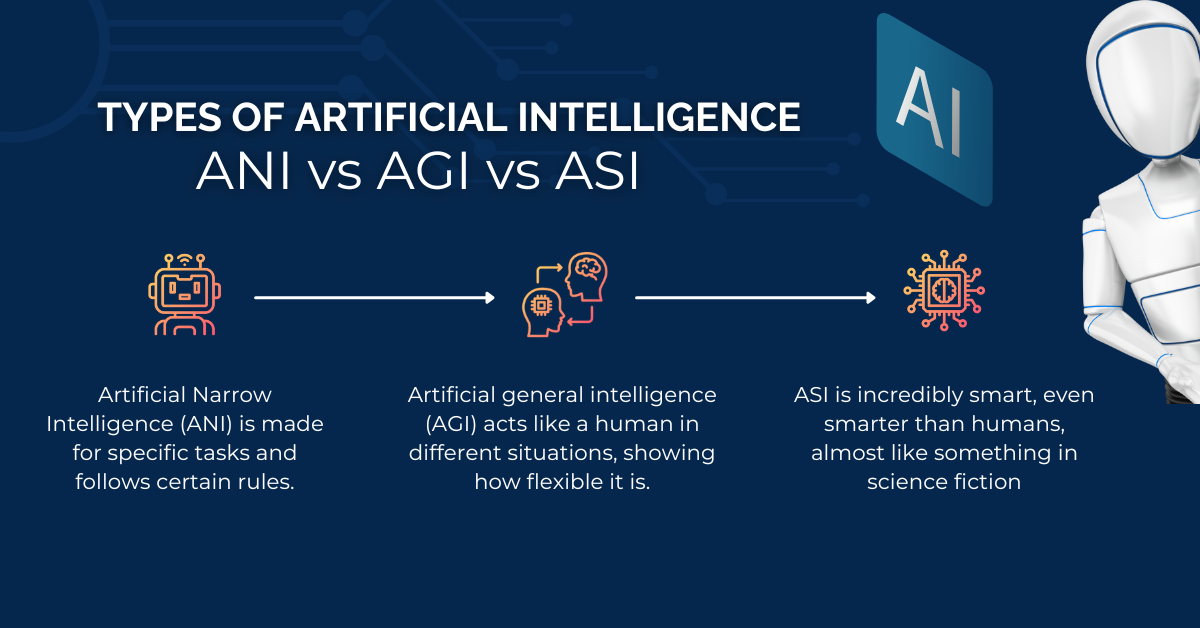To be honest, there isn’t a straightforward answer. Even experts can’t seem to agree on it. Some say it’s a term from way back in 1954 that doesn’t fit today, while others define it as machines that can learn, reason, and act on their own.
The real trouble lies in the word “intelligence.” While we all understand “artificial,” psychologists still can’t decide what “intelligence” means in humans, let alone in computers.
Adding to the confusion is that what qualifies as AI keeps changing. There’s something called the AI effect, which means that as soon as we figure out how to do something with computers, we stop calling it AI. For example, years ago, people thought a computer needed some kind of artificial intelligence to read text, but now that’s just a regular feature on your phone’s camera app. Even chatbots that talk to you are starting to seem less special as we learn more about them.
Categories of ARTIFICIAL INTELLIGENCE
So instead of using a confusing definition of AI, let’s focus on three clearer ones:
Artificial Narrow Intelligence (ANI)
Artificial Narrow Intelligence (ANI) is like a computer that’s good at one thing. Some examples include chatbots like ChatGPT, language models like GPT-4, image generators like DALL-E 2, self-driving cars, voice assistants like Alexa and Siri, and complex algorithms used in various fields like Netflix’s recommendation algorithms.
ANI is the most prevalent form of AI currently in use. It’s designed to perform a specific task, such as:
- Image recognition
-
Natural language processing
-
Chess playing
-
Expert systems
ANI is narrow and operates within a set of boundaries. It’s created using machine learning algorithms that can learn from data and get better over time. But ANI can’t generalize across multiple domains or understand the context behind its tasks.
Artificial General Intelligence (AGI)
Artificial General Intelligence (AGI) also known as strong AI is an AI that’s as smart as or smarter than humans. It’s not limited to specific tasks like ANI. Some say models like ChatGPT are AGI, but most researchers don’t agree. AGI would be able to do almost anything a human can, like make coffee or go to university.
AGI, also known as Strong AI, is the holy grail of AI research. It’s designed to possess the ability to:
- Reason and problem-solve like humans
- Understand the context and nuances of tasks
-
Learn and adapt across multiple domains
-
Improve its own performance through self-modification
AGI would be human level intelligence, able to do any intellectual task as human. But AGI is still in its infancy and is a topic of debate among experts
Artificial Super Intelligence (ASI)
Artificial Super Intelligence (ASI) is the most advanced form of AI, far surpassing human intelligence. Think of it as the supercomputers in sci-fi movies. We’re not there yet but it’s a topic of debate among experts.
ASI is a hypothetical AI system that surpasses human intelligence by a significant margin. It would possess an intellect far beyond human capabilities, allowing it to:
- Solve complex problems that are currently unsolvable by humans
- Create new technologies and innovations at an unprecedented rate
-
Potentially pose an existential risk to humanity due to its immense power
ASI is still a hypothetical and is considered a future development. What are the ethics and safety of such an AI?
Key differences between ASI, ANI, and AGI

The Future of AGI
When we might see AGI? Opinions may vary widely. Some argue we already have this, others claim it’s difficult to attain, and some predict it’s just around the corner. The term AGI is becoming more popular as tools like ChatGPT are pushing us to rethink what we really mean by artificial intelligence. While these tools are remarkable, they are now here just like the sci-fi AI depicted in movies like Star Trek.
In essence, AGI is an AI that could easily fit into the cast of a space opera.
"Defining AI: why it's so tricky. Experts can't agree, and the term 'intelligence' remains a mystery even in humans. The AI effect: as tech advances, what was once considered AI becomes the norm. What do you think AI means? #AI #ArtificialIntelligence"




